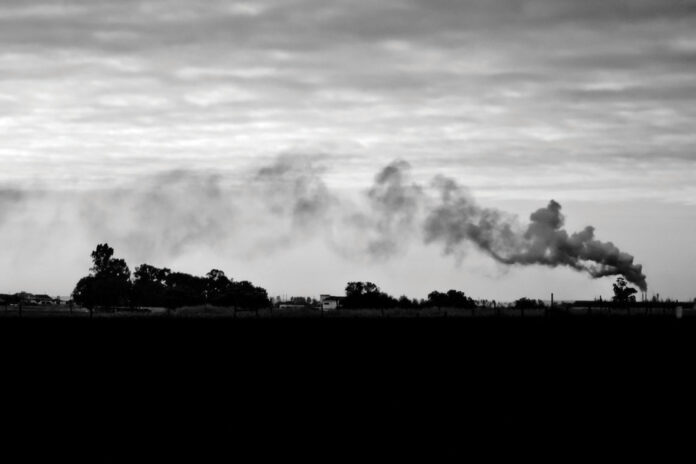University looking at reducing carbon emissions from its heating, cooling systems
For students sticking around campus for summer session classes, research or work, more triple-digit degree weather is ahead thanks to climate change — but that’s not all.
“What we are used to is going to be gone [over the next few decades], there is going to be a new normal,” said Camille Kirk, the director and campus sustainability planner for the UC Davis Office of Sustainability.
Climate change highlights a dramatic change in weather patterns. It has been associated with changes in precipitation, temperature, wildfires and other natural disasters. By the end of the century, the climate surrounding UC Davis is predicted to match Phoenix, Arizona. So far, UC Davis has seen wildfires with air quality shuttering its buildings, year-long droughts leading to strict water conservation efforts and atmospheric rivers flooding the area with heavy precipitation. This year’s Spring Quarter featured a few thunderstorms in its final weeks.
“I was in Davis in 1972 [and] on an ordinary day, the air pollution and smog around the city was so bad you couldn’t breathe,” said Arnold Bloom, a distinguished and John B. Orr endowed professor at the UC Davis Department of Plant Sciences. “The horizon would be brown for half the year. On a sunny day, you could move towards Sacramento or Southern California, it would be even worse. You could feel your eyes burning.”
Five greenhouse gases: carbon dioxide, nitrous oxide, methane, ozone and chlorofluorocarbons contribute to Earth’s changing environment and atmosphere. Carbon dioxide and nitrous oxide are the biggest contributors to greenhouse gas emissions. Even though these gases are invisible, they are producing noticeable, long-term changes.
Paul Ullrich, an associate professor at the UC Davis Department of Land, Air and Water Resources, models climate change’s effects on the Earth through physical logs of the Earth’s mass, energy and momentum conservation. From there, the atmosphere, condensation, evaporation, radiation, land use and ocean environmental factors, such as salinity and local water resources, are factored in through equations into a computer model.
“The predicted primary effects of greenhouse gases are water availability, changes in precipitation where we see more atmospheric rivers and increased heat, which will affect our agricultural viability,” Ullrich said. “We might need to abandon agricultural practices in certain areas, others might open up.”
The atmosphere’s current carbon dioxide levels are 0.04%. Even then, agriculture has experienced changes.
“Plants get a temporary boost in photosynthesis, where they make higher energy compounds from the carbon dioxide in the atmosphere,” Bloom said. “When plants get limited by other nutrients, such as nitrate, due to greenhouse gas emissions, they lose their ability to make proteins. They have stunted growth. Pests become more voracious when they’re not reaching their protein needs.”
Notably, high carbon dioxide availability leads to water-efficient plants. The higher carbon dioxide concentration encourages plants to close the openings in their leaves to allow carbon dioxide in for photosynthesis, keeping water inside the plant longer.
UC Davis’ plants have a slightly different experience. The extreme weather, especially the drought, have stressed out the campus landscape.
“We are thinking about landscape adaption, looking at places we that have plants that can live in this type of environment,” Kirk said. “We want to make this campus liveable and have landscape plants that can translate across time. We can be a beautiful campus while still being resilient.”
There are multiple ways to get involved with climate change, starting with this campus.
“There are two major categories, or sects, in climate science: mitigation, where we focus on decarbonization — reducing greenhouse emissions from the atmosphere, and adaptation, where we acknowledge climate change is unavoidable and create strategies that allow us to continue on in this changing climate,” Ullrich said. “California is going to see an increase in water conveyance, where we will need to send more water from Northern California to Southern California.
In 2012, UC Davis emitted 209,000 metric tons of carbon dioxide, adapting solar farm technology to power the campus in 2015. The 16.3-megawatt solar farm provides 14% of the energy resources on campus.
“In the past three years since our solar farm went online, we have seen our emissions go from 194,000 metric tons of carbon dioxide down to 163,000 metric tons,” said Alyssa DiGirolamo, a fourth-year civil and environmental engineering major and greenhouse gas inventory data analyst for the UC Davis Office of Sustainability. “Our electricity emissions are getting closer to zero.”
UC Davis is also looking at reducing carbon emissions from its heating and cooling systems, which use natural gas. The UC Davis Medical Center uses a natural gas cogenerator to maintain its heating and cooling.
“You can start with your day-to-day life,” DiGirolamo said. “You can compost, not use single-use plastics, and share your personal experiences with others. This is also not about judging others. People move at their own pace, communicate with each other and try to educate others. Use your information and pass it along to share with someone else.”
Written by: Foxy Robinson — science@theaggie.org





